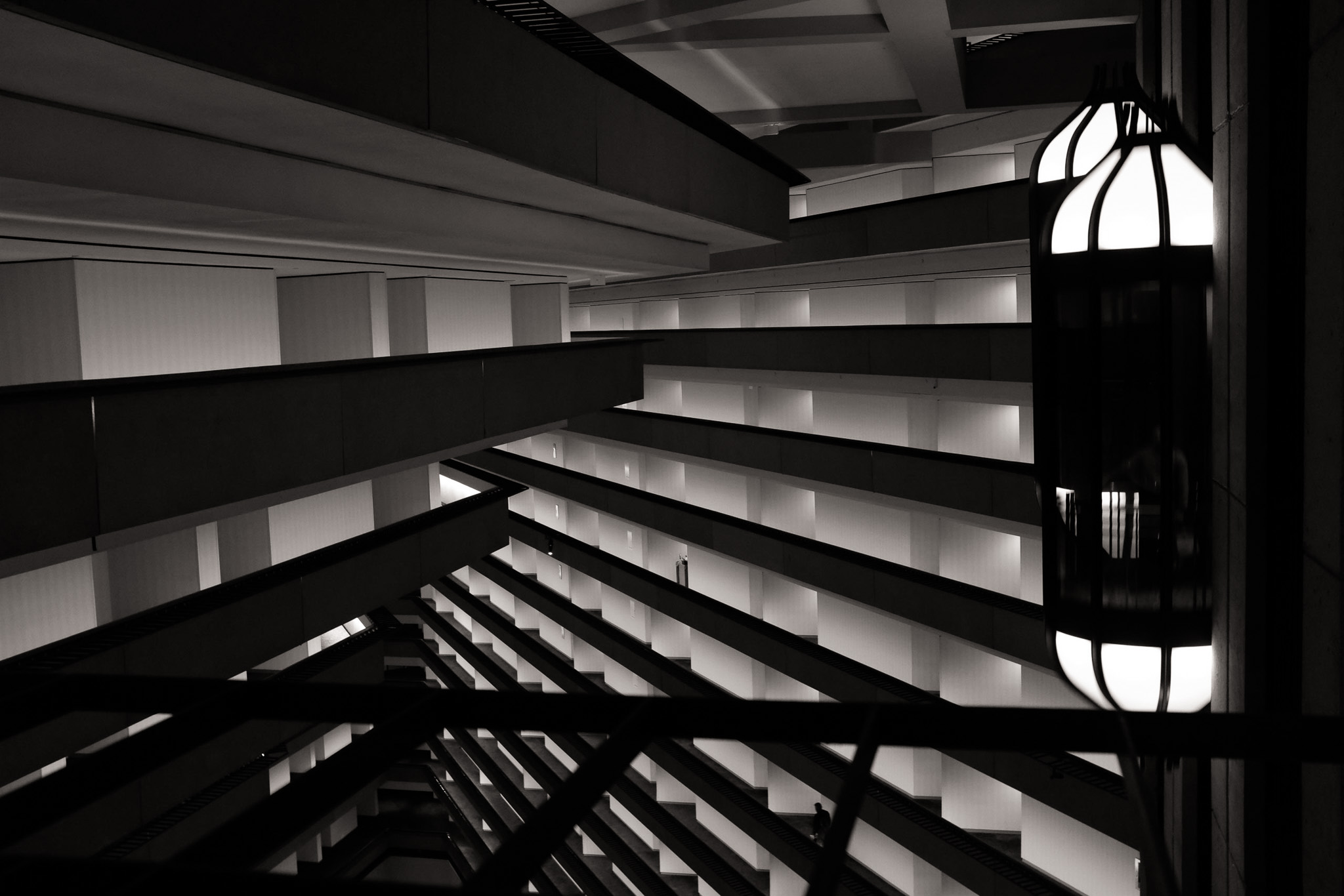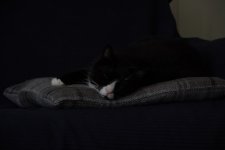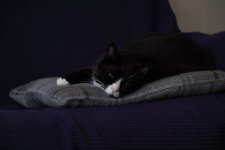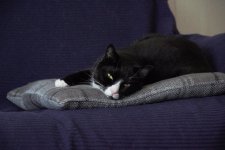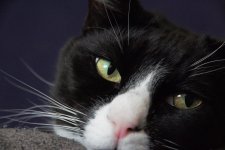- Messages
- 213
- Name
- Charlie
- Edit My Images
- No
Evening all,
I seem to have hit a bit of a stumbling block and not entirely sure what I've done, just wondered if someone here may be able to help me please?
I took this photo indoors this afternoon whilst it was still daylight. The camera combo I was using was a Canon EOS 100D with a EFS 15-85mm macro lens. It was in manual mode (still trying to learn this) with a shutter speed of 1/250, aperture of f5.6 and ISO of 200, shot in RAW format. It's supposed to be our cat curled up on his bed infront of the window but as you can see there's nothing there.
When I changed the camera to aperture priority I can get a photo but it's blurry as the shutter speed is slow (even if I speed the shutter up).
I did import this photo to lightroom to see if I could post edit it but that didn't seem to do anything.
Could someone please let me know what I've done wrong?
Thank you
I seem to have hit a bit of a stumbling block and not entirely sure what I've done, just wondered if someone here may be able to help me please?
I took this photo indoors this afternoon whilst it was still daylight. The camera combo I was using was a Canon EOS 100D with a EFS 15-85mm macro lens. It was in manual mode (still trying to learn this) with a shutter speed of 1/250, aperture of f5.6 and ISO of 200, shot in RAW format. It's supposed to be our cat curled up on his bed infront of the window but as you can see there's nothing there.
When I changed the camera to aperture priority I can get a photo but it's blurry as the shutter speed is slow (even if I speed the shutter up).
I did import this photo to lightroom to see if I could post edit it but that didn't seem to do anything.
Could someone please let me know what I've done wrong?
Thank you


